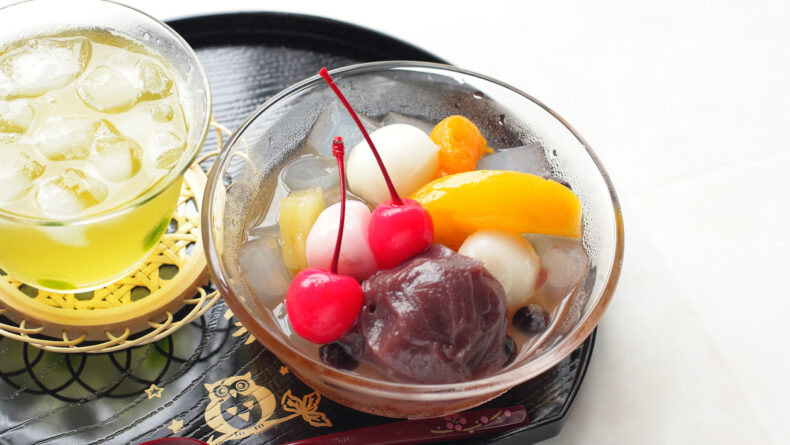Do You Know What This Is? Pomegranate
Pomegranate Jeweled Carrot Salad
I think most of us have heard of pomegranate already. But how many of us have actually used it? As in, outside of it being infused in our body butters, face cleansers and chapsticks?
For me, pomegranate is very familiar. This is because it’s Persian! Meaning, I grew up in Iran munching on it, drinking its juice and much to my mother’s annoyance, staining my clothes with it.
In Japan, each time I served it to my Japanese guests they’d be seriously surprised. When my friend Yuko first encountered it, I’d mixed it through a simple green salad. It was her fascinated expression that got me thinking: “Wow, there’s really no other fruit like this.” Pomegranates are one in a billion (excuse the pun — you know, ‘cos there’s like a billion seeds there).
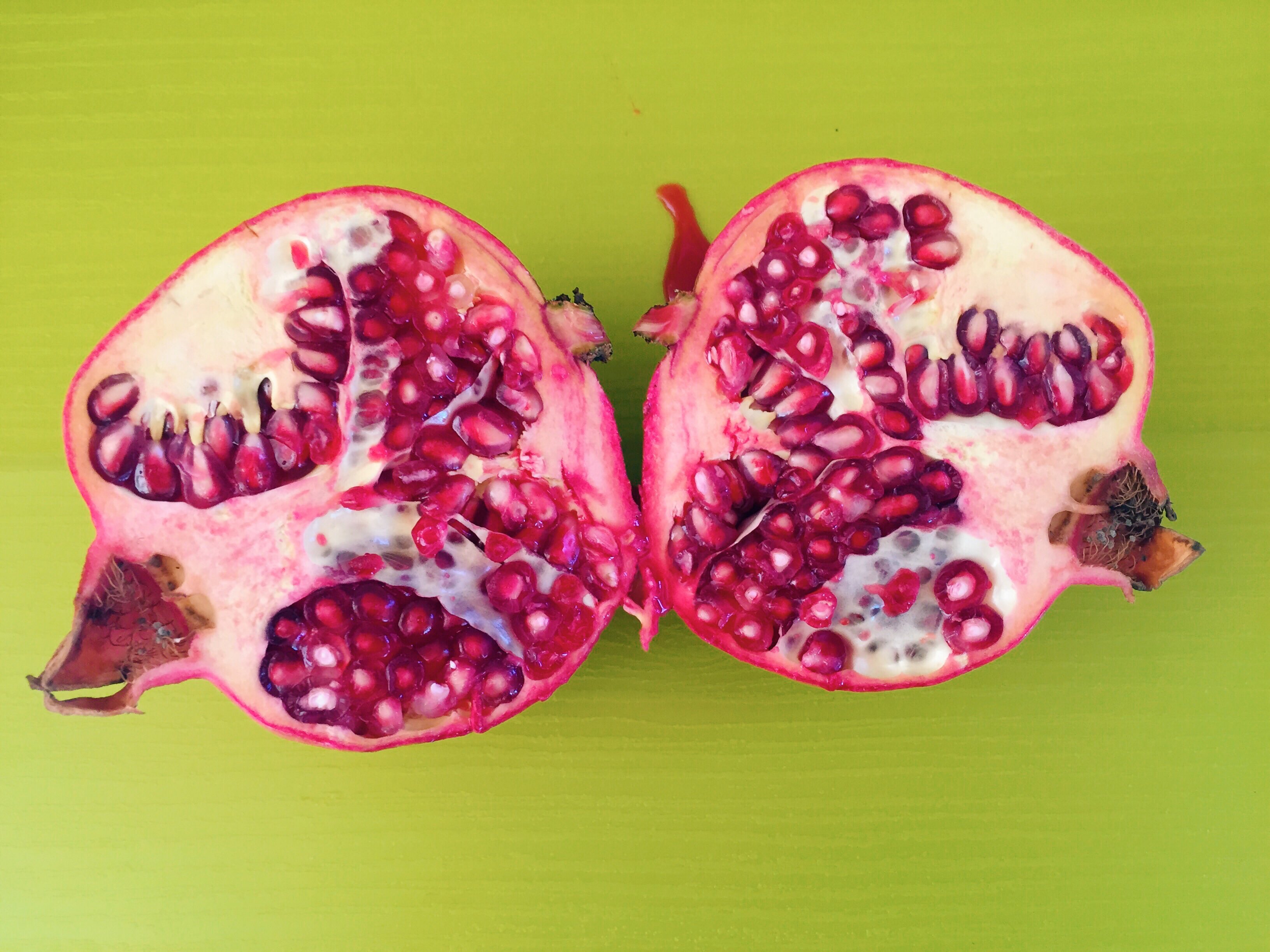
When we moved to New Zealand, we reduced our pomegranate intake because we could no longer afford them. Since New Zealand imports its pomegranates all the way from America, they become crazy expensive.
But for all of you living in Japan, there’s good news! While not native to Japan, the pomegranate is widely grown here.
What’s more, the pomegranates I saw in my local supermarket were always branded with a reduction sticker. I figured this was due to the fact people either didn’t know what they were or else didn’t know how to use them. Also, I even spotted pomegranate trees in Okayama near my residence, and in Osaka by a river.
Moreover, the pomegranate is extensively used for bonsai because of its flowers and for the unusual twisted bark the older specimens can attain.
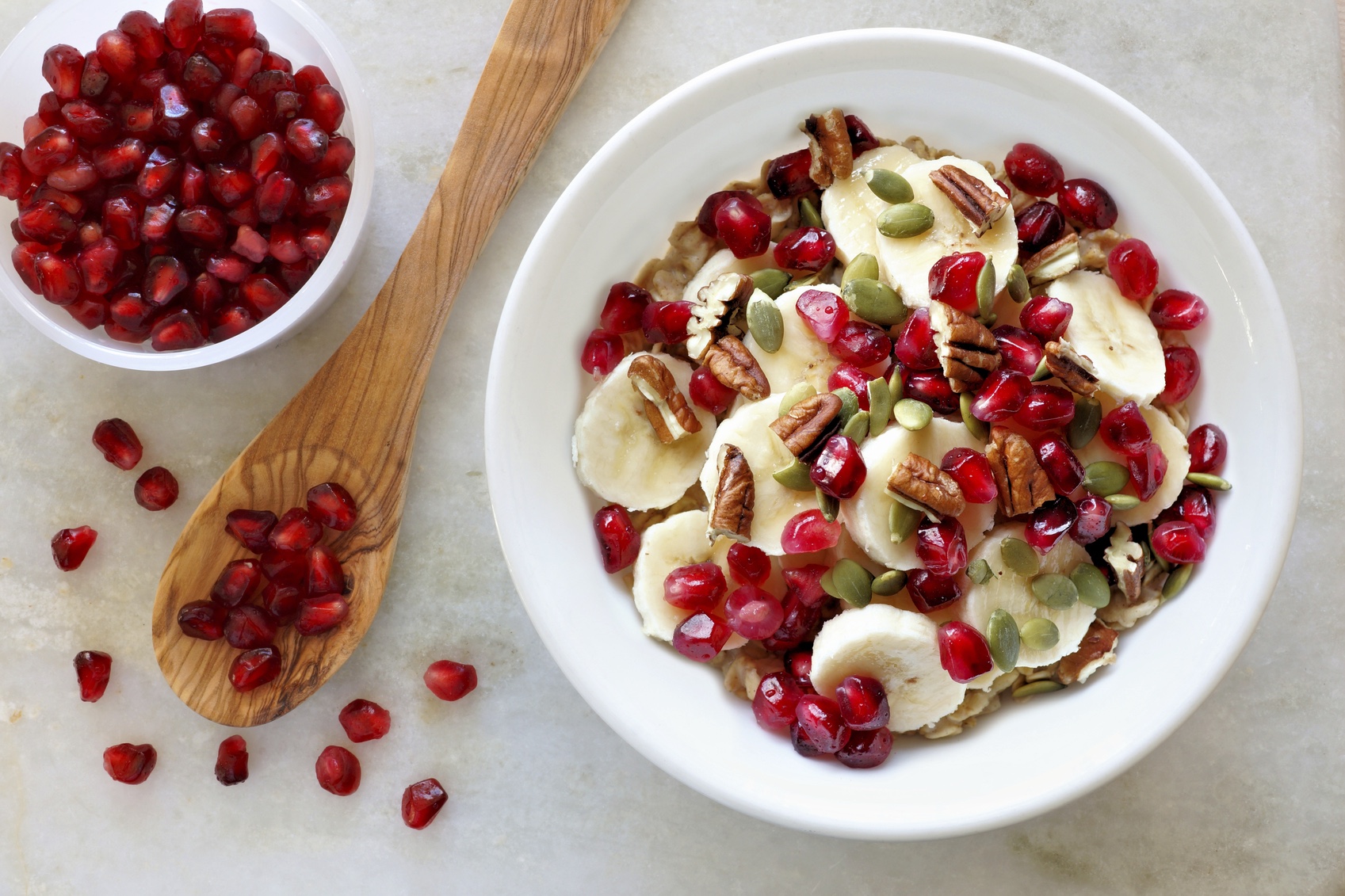 So what’s the big deal?
So what’s the big deal?
Well, other than mimicking ruby red gems, the pomegranate is packed with impressive nutrients. These include: fiber, protein, Vitamin C, Vitamin K, folate and potassium. They also contain “punicalagins” — super powerful antioxidants from the juice and peel of a pomegranate are found to have three times the antioxidant activity of red wine and green tea. Move over matcha, I say.
In addition, research suggests pomegranate consumption may improve exercise performance, help boost memory, fight bacterial and fungal infections, lower risks of heart disease and reduce blood pressure.

Got it. How do I eat it?
However your stomach pleases. After you’ve peeled and deseeded a pomegranate you can consume it as you wish. Some of my favorite ways include:
- Mixing it in a fruit or vegetable salad
- Infusing it in “spa water” (water with added fruit)
- In or alongside breakfast granola or yogurt
- As a decoration for cakes, cupcakes, smoothie-bowls etc.
- As a garnish on fish and/or meat dishes
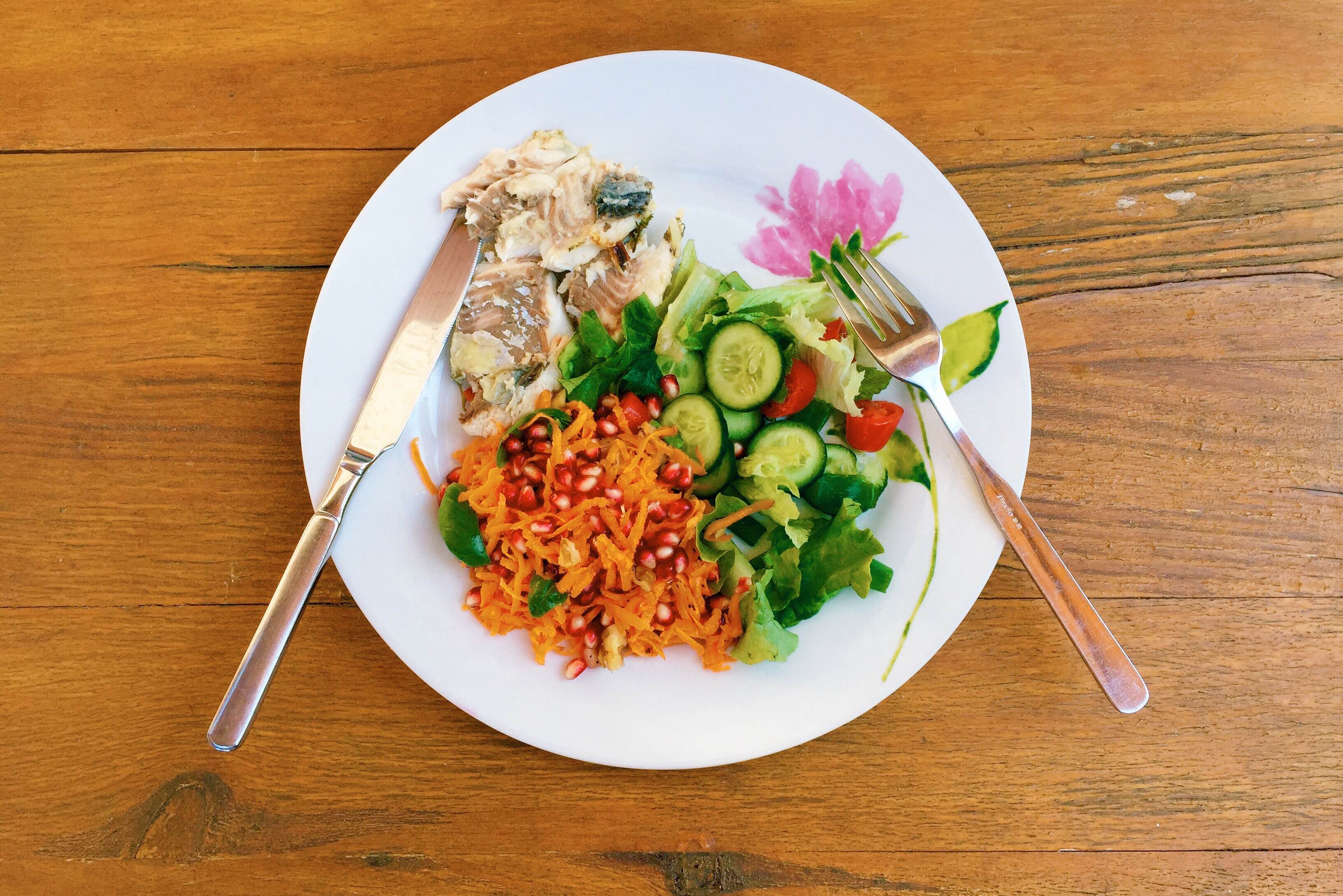
Pomegranate Jeweled Carrot Salad
Ingredients
1 large carrot, peeled and grated
Seeds from half a pomegranate
Handful of raw walnut pieces
Juice of half a lemon
Small bunch of fresh basil, torn
Drizzle of extra-virgin olive oil
Salt
Pepper
Method
Mix all ingredients together. Serve as is or as a side salad alongside a protein dish.
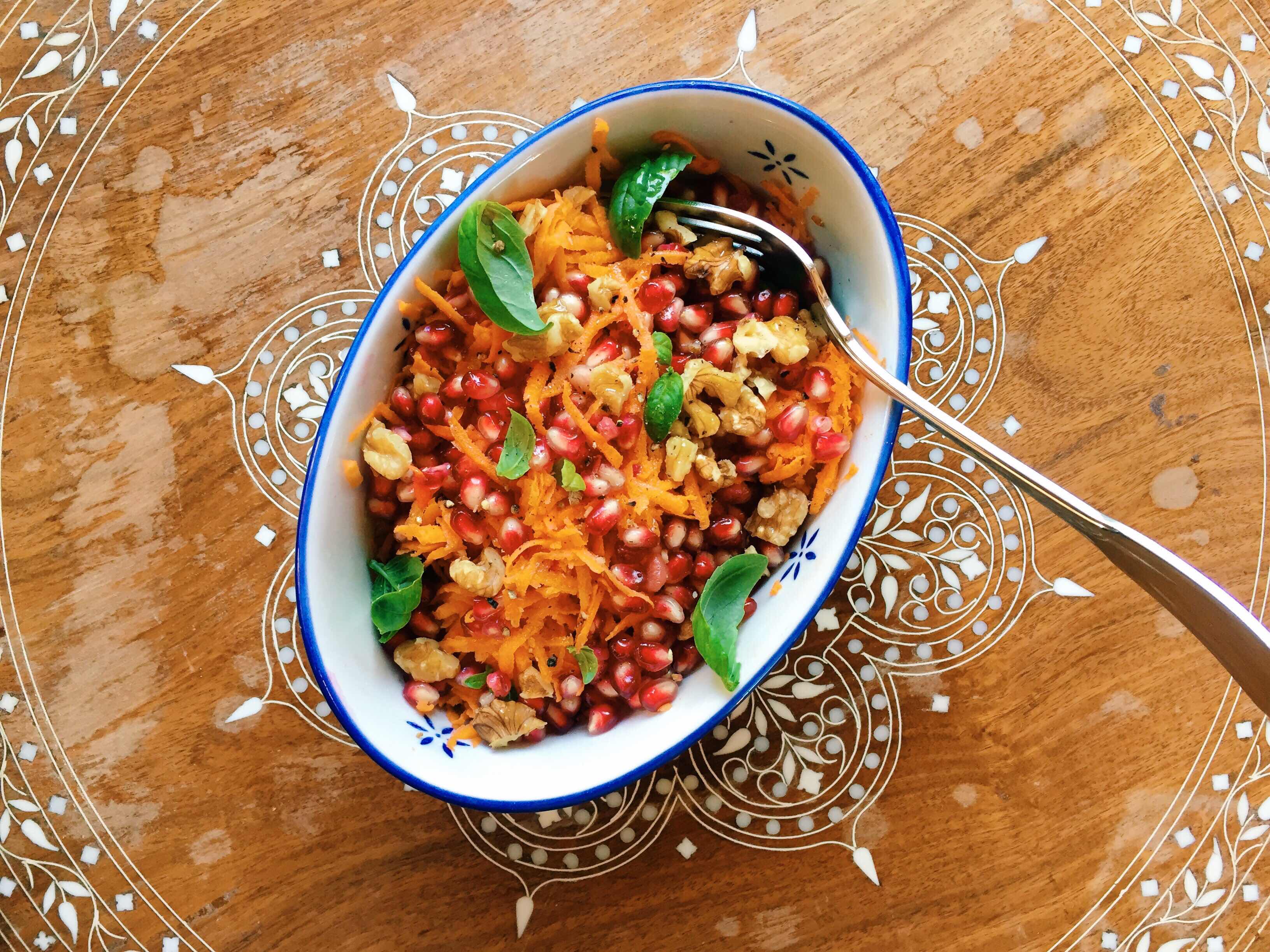
Bonus: Pomegranate Juice
This one’s a little embarrassing but if you want to visit my Iranian childhood days, you can try it.
Ingredients
1 ripe pomegranate
1 cocktail straw
Method
Using your fingers (not fingernails) press the pomegranate all over. What you are essentially trying to do is juicing it without piercing the skin. When the poor pomegranate is limp from your fingers torturing it, using a sharp kitchen knife, make a small but deep slit near it’s head. Insert your cocktail straw through the slit and voila! Pomegranate juice.
P.S. — That night when Yuko and her daughter Juri first tried pomegranate (and loved it by the way) we spent the rest of the evening watching “deseeding pomegranate” videos on the internet. We laughed so much. If you have a spare minute, you should YouTube it. The videos are strangely therapeutic.













